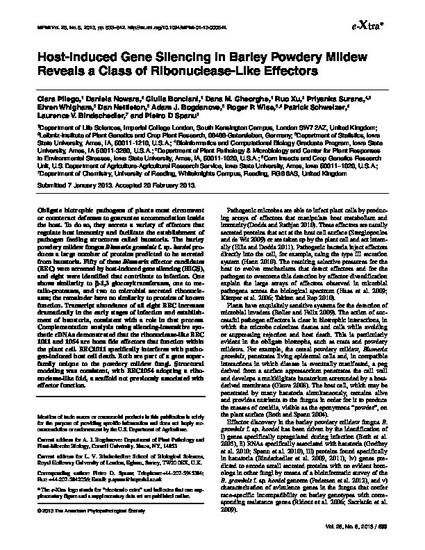
Obligate biotrophic pathogens of plants must circumvent or counteract defenses to guarantee accommodation inside the host. To do so, they secrete a variety of effectors that regulate host immunity and facilitate the establishment of pathogen feeding structures called haustoria. The barley powdery mildew fungus Blumeria graminis f. sp. hordeiproduces a large number of proteins predicted to be secreted from haustoria. Fifty of these Blumeria effector candidates (BEC) were screened by host-induced gene silencing (HIGS), and eight were identified that contribute to infection. One shows similarity to β-1,3 glucosyltransferases, one to metallo-proteases, and two to microbial secreted ribonucleases; the remainder have no similarity to proteins of known function. Transcript abundance of all eight BEC increases dramatically in the early stages of infection and establishment of haustoria, consistent with a role in that process. Complementation analysis using silencing-insensitive synthetic cDNAs demonstrated that the ribonuclease-like BEC 1011 and 1054 are bona fide effectors that function within the plant cell. BEC1011 specifically interferes with pathogen-induced host cell death. Both are part of a gene superfamily unique to the powdery mildew fungi. Structural modeling was consistent, with BEC1054 adopting a ribonuclease-like fold, a scaffold not previously associated with effector function.
Available at: http://works.bepress.com/dan-nettleton/46/

This article is from Molecular Plant-Microbe Interactions 26 (2013): 633, doi:10.1094/MPMI-01-13-0005-R.